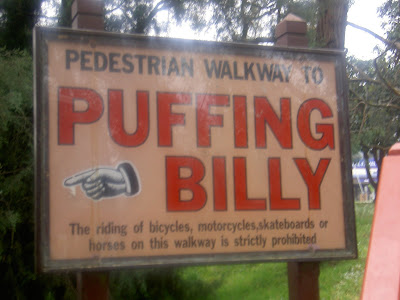Sun-drenched, sea-splashed, with breathtaking sights, the Greek islands of Santorini, Mykonos and Skopelos have it all.
LIKE other countries lapped by the Mediterranean Sea, Greece enjoys a most amicable climate, not to mention scenic attractions and cultural heritage that, together, make it stand out from the usual sun-sea-and-sangria holiday.
Santorini

The fame of Santorini in the Aegean Sea can be traced back to 1,500 BC when a volcano erupted here, killing thousands and forming a monstrous caldera that today lures countless tourists.
Locals take maximum advantage of the scenic aftermath of this cataclysmic event by building houses on hilltops and cliffs that offer spectacular aerial views of the submerged volcano. The waters change from green to blue according to the sun.
The cliff-top Oia boasts the most awesome sunsets, with brilliant colour changes every few seconds. Perched nonchalantly on the cliffs, it is easily the most picturesque village with its exclusive boutique hotels, cafés, restaurants, galleries and shops.
Oia is said to be the most photographed village in all of Greece and is famed for its almost iconic warren of narrow streets, whitewashed buildings, blue-domed churches and pretty vistas. The village offers different views of the volcano from various angles, while at the same time being something of a wonder itself – its preserved buildings and homes built into niches in the rocks are a marvel to behold, especially since they are for everyday living and not just for display.
Akrotiri was a Minoan settlement on the Greek island of Santorini and bears relics of the Hellenic civilisation.
Three hundred steps take you down to the port of Ammoudi and the pristine beach of Armenis, which known for its charming taverns and floating pumice stones. The capital Thira also has pedestrian streets and 580 steps carved into the rock-face leading down to the sea at Skala. Fret not; there is also a cable car for those who are far from fit.
Due to the volcanic eruption and the sinking of parts of it into the seabed, Santorini enjoys being part of the Atlantis puzzle.
Could it indeed be the fabled city which sank in one terrible day and night into the sea? Was this how the Atlantis story came about? Who knows?
Archaeology is a big thing here even if you’re not Indiana Jones, and even the most uncultured of the lot are fascinated by the relics of Hellenic civilisation that can be glimpsed. The site near the village of Akrotiri shows the remnants of a once great Minoan city dating to the time of the eruption.
The amazing frescoes alone are worth the trip to Greece, and so precious are they that they are under the aegis of National Archaeological Museum of Athens.
Mykonos

Mykonos, named after the god Apollo’s grandson Mykons, is well-known for being classically Grecian while exuding a cosmopolitan feel. It offers great shopping and a throbbing nightlife that lures the jet-set. Mykonos’s nightlife is said to be among the most sizzling in Europe. Here is the Cyclades’ party-central.
Its hills, crowned with quaint windmills, overlook the scenic harbour and Paraportiani Church, the most important of the 400 churches on the island. The archaeological, folklore and nautical museums are interesting but it’s definitely more fun to take a boat trip to the nearby uninhabited island of Delos, where Leto is said to have given birth to Apollo and Artemis while holding on to a tree branch much like Buddha’s mother.
In 426 BC, the Athenians ordered the purification of Delos, and all burial bones were taken to Rhenia. To this day, no one is allowed to be born or die on sacred Delos, but visitors who are not on their last legs are most welcome!
Among Delos’s famous sights are the ruins of Apollo’s Temple, Stadium, Hippodrome, Treasury, Sacred Way, as well as its theatre, houses and the large market places called Agora (from which agoraphobia, meaning the fear of public places, is derived!). With such a wealth of historical attractions, the entire island has been declared a museum!
Skopelos

Skopelos is among the largest and most beautiful islands in Greece. In Byzantine times, it was designated a place of exile, though some protested that the location was too lovely for it to be a place of punishment! Its history is quite exotic as it became part of the Duchy of Naxos, then under a Venetian governor, before coming under Turkish rule until 1821.
Skopelos has 360 churches with the more outstanding ones being the Church of Our Lady, Church of Annunciation and the Byzantine Church of Lady Mother.
The island is where they filmed the Mamma Mia! movie. That it was chosen by the filmmakers is not surprising because, after all, thousands have been making a song-and-dance about Skopelos through the ages. Tourists to the island may now hop on the Mamma Mia! tour, a Mediterranean version of Salzburg’s Sound of Music trail.
For more information, contact Parlo Tours tel:03-2274 7877
By MARZUKI ODIN
Article courtasy THE STAR, 28 FEB 2008 (Page WE20)
THE START ONLINE
LIKE other countries lapped by the Mediterranean Sea, Greece enjoys a most amicable climate, not to mention scenic attractions and cultural heritage that, together, make it stand out from the usual sun-sea-and-sangria holiday.
Santorini

The fame of Santorini in the Aegean Sea can be traced back to 1,500 BC when a volcano erupted here, killing thousands and forming a monstrous caldera that today lures countless tourists.
Locals take maximum advantage of the scenic aftermath of this cataclysmic event by building houses on hilltops and cliffs that offer spectacular aerial views of the submerged volcano. The waters change from green to blue according to the sun.
The cliff-top Oia boasts the most awesome sunsets, with brilliant colour changes every few seconds. Perched nonchalantly on the cliffs, it is easily the most picturesque village with its exclusive boutique hotels, cafés, restaurants, galleries and shops.
Oia is said to be the most photographed village in all of Greece and is famed for its almost iconic warren of narrow streets, whitewashed buildings, blue-domed churches and pretty vistas. The village offers different views of the volcano from various angles, while at the same time being something of a wonder itself – its preserved buildings and homes built into niches in the rocks are a marvel to behold, especially since they are for everyday living and not just for display.
Akrotiri was a Minoan settlement on the Greek island of Santorini and bears relics of the Hellenic civilisation.
Three hundred steps take you down to the port of Ammoudi and the pristine beach of Armenis, which known for its charming taverns and floating pumice stones. The capital Thira also has pedestrian streets and 580 steps carved into the rock-face leading down to the sea at Skala. Fret not; there is also a cable car for those who are far from fit.
Due to the volcanic eruption and the sinking of parts of it into the seabed, Santorini enjoys being part of the Atlantis puzzle.
Could it indeed be the fabled city which sank in one terrible day and night into the sea? Was this how the Atlantis story came about? Who knows?
Archaeology is a big thing here even if you’re not Indiana Jones, and even the most uncultured of the lot are fascinated by the relics of Hellenic civilisation that can be glimpsed. The site near the village of Akrotiri shows the remnants of a once great Minoan city dating to the time of the eruption.
The amazing frescoes alone are worth the trip to Greece, and so precious are they that they are under the aegis of National Archaeological Museum of Athens.
Mykonos

Mykonos, named after the god Apollo’s grandson Mykons, is well-known for being classically Grecian while exuding a cosmopolitan feel. It offers great shopping and a throbbing nightlife that lures the jet-set. Mykonos’s nightlife is said to be among the most sizzling in Europe. Here is the Cyclades’ party-central.
Its hills, crowned with quaint windmills, overlook the scenic harbour and Paraportiani Church, the most important of the 400 churches on the island. The archaeological, folklore and nautical museums are interesting but it’s definitely more fun to take a boat trip to the nearby uninhabited island of Delos, where Leto is said to have given birth to Apollo and Artemis while holding on to a tree branch much like Buddha’s mother.
In 426 BC, the Athenians ordered the purification of Delos, and all burial bones were taken to Rhenia. To this day, no one is allowed to be born or die on sacred Delos, but visitors who are not on their last legs are most welcome!
Among Delos’s famous sights are the ruins of Apollo’s Temple, Stadium, Hippodrome, Treasury, Sacred Way, as well as its theatre, houses and the large market places called Agora (from which agoraphobia, meaning the fear of public places, is derived!). With such a wealth of historical attractions, the entire island has been declared a museum!
Skopelos

Skopelos is among the largest and most beautiful islands in Greece. In Byzantine times, it was designated a place of exile, though some protested that the location was too lovely for it to be a place of punishment! Its history is quite exotic as it became part of the Duchy of Naxos, then under a Venetian governor, before coming under Turkish rule until 1821.
Skopelos has 360 churches with the more outstanding ones being the Church of Our Lady, Church of Annunciation and the Byzantine Church of Lady Mother.
The island is where they filmed the Mamma Mia! movie. That it was chosen by the filmmakers is not surprising because, after all, thousands have been making a song-and-dance about Skopelos through the ages. Tourists to the island may now hop on the Mamma Mia! tour, a Mediterranean version of Salzburg’s Sound of Music trail.
For more information, contact Parlo Tours tel:03-2274 7877
By MARZUKI ODIN
Article courtasy THE STAR, 28 FEB 2008 (Page WE20)
THE START ONLINE



































































